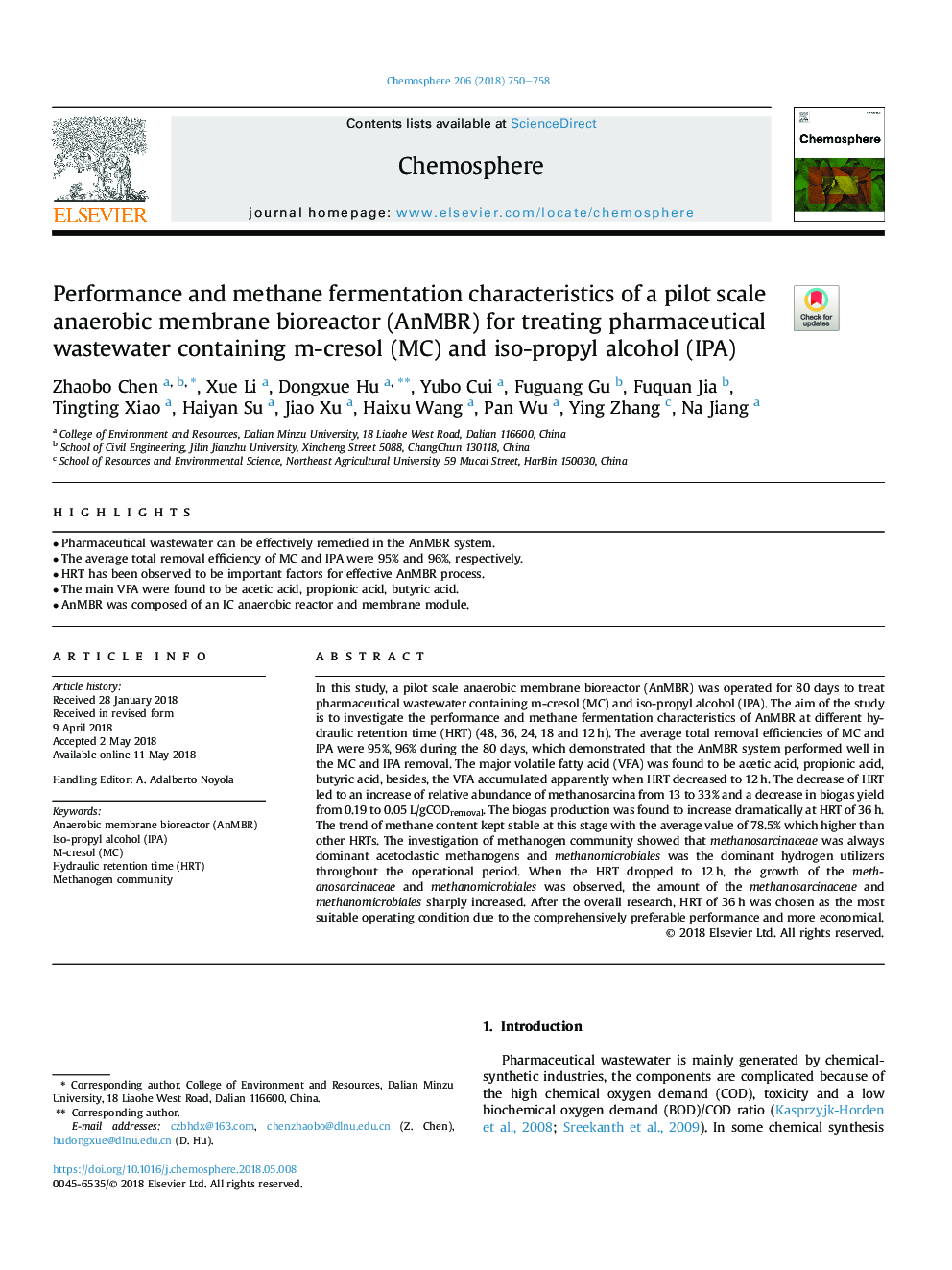| Article ID | Journal | Published Year | Pages | File Type |
|---|---|---|---|---|
| 8850986 | Chemosphere | 2018 | 9 Pages |
Abstract
In this study, a pilot scale anaerobic membrane bioreactor (AnMBR) was operated for 80 days to treat pharmaceutical wastewater containing m-cresol (MC) and iso-propyl alcohol (IPA). The aim of the study is to investigate the performance and methane fermentation characteristics of AnMBR at different hydraulic retention time (HRT) (48, 36, 24, 18 and 12â¯h). The average total removal efficiencies of MC and IPA were 95%, 96% during the 80 days, which demonstrated that the AnMBR system performed well in the MC and IPA removal. The major volatile fatty acid (VFA) was found to be acetic acid, propionic acid, butyric acid, besides, the VFA accumulated apparently when HRT decreased to 12â¯h. The decrease of HRT led to an increase of relative abundance of methanosarcina from 13 to 33% and a decrease in biogas yield from 0.19 to 0.05â¯L/gCODremoval. The biogas production was found to increase dramatically at HRT of 36â¯h. The trend of methane content kept stable at this stage with the average value of 78.5% which higher than other HRTs. The investigation of methanogen community showed that methanosarcinaceae was always dominant acetoclastic methanogens and methanomicrobiales was the dominant hydrogen utilizers throughout the operational period. When the HRT dropped to 12â¯h, the growth of the methanosarcinaceae and methanomicrobiales was observed, the amount of the methanosarcinaceae and methanomicrobiales sharply increased. After the overall research, HRT of 36â¯h was chosen as the most suitable operating condition due to the comprehensively preferable performance and more economical.
Related Topics
Life Sciences
Environmental Science
Environmental Chemistry
Authors
Zhaobo Chen, Xue Li, Dongxue Hu, Yubo Cui, Fuguang Gu, Fuquan Jia, Tingting Xiao, Haiyan Su, Jiao Xu, Haixu Wang, Pan Wu, Ying Zhang, Na Jiang,
